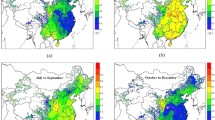Abstract
Purpose
A life-cycle assessment (LCA) was performed to evaluate the environmental impacts of the remediation of industrial soils contaminated by polychlorobiphenyl (PCB). Two new bioremediation treatment options were compared with the usual incineration process. In this attributional LCA, only secondary impacts were considered. The contaminated soil used for the experiments contained 200 mg of PCB per kilogram.
Methods
Three off-site treatment scenarios were studied: 1) bioremediation with mechanical aeration, 2) bioremediation with electric aeration and 3) incineration with natural gas. Bioremediation processes were designed from lab-scale, scale-up and pilot experiments. The incineration technique was inspired by a French plant. A semi-quantitative uncertainty analysis was performed on the data. Environmental impacts were evaluated with the CML 2001 method using the SimaPro software.
Results and discussion
In most compared categories, the bioremediation processes are favorable. Of the bioremediation options, the lowest environmental footprint was observed for electric aeration. The uncertainty analysis supported the results that compared incineration and bioremediation but decreased the difference between the options of aeration. The distance of transportation was one of the most sensitive parameters, especially for bioremediation. At equal distances between the polluted sites and the treatment plant, bioremediation had fewer impacts than incineration in eight out of 13 categories.
Conclusions
The use of natural gas for the incineration process generated the most impacts. Irrespective of the aeration option, bioremediation was better than incineration. The time of treatment should be taken into account. More precise and detailed data are required for the incineration scenario. More parameters of biological treatments should be measured. LCA results should be completed using ecological and health risk assessment and an acceptability evaluation.





Similar content being viewed by others
References
Blanc A, Metivier-Pignon H, Gourdon R, Rousseaux P (2004) Life cycle assessment as a tool for controlling the development of technical activities: application to the remediation of a site contaminated by sulfur. Adv Environ Res 8(3–4):613–627
Cadotte M, Deschênes L, Samson R (2007) Selection of a remediation scenario for a diesel-contaminated site using LCA. Int J Life Cycle Assess 12(4):239–251
Diamond ML, Page CA, Campbell M, McKenna S, Lall R (1999) Life-cycle framework for assessment of site remediation options: method and generic survey. Environ Toxicol Chem 18(4):788–800
Frischknecht R, Jungbluth N, Althaus H-J, Doka G, Dones R, Hischier R, Hellweg S, Nemecek T, Rebitzer G, Spielmann M (2007) Overview and methodology. Final report Ecoinvent data v2.0, No. 1. Swiss Centre for Life Cycle Inventories, Dübendorf
Hu X, Zhu J, Ding Q (2011) Environmental life-cycle comparisons of two polychlorinated biphenyl remediation technologies: incineration and base catalyzed decomposition. J Hazard Mater 191(1–3):258–268
Huijbregts MAJ, Breedveld L, Huppes G, de Koning A, van Oers L, Suh S (2003) Normalization figures for environmental life-cycle assessment: The Netherlands (1997/1998), Western Europe (1995) and the world (1990 and 1995). J Clean Prod 11(7):737–748
Jolliet O, Saadé M, Crettaz P (2005) Analyse du cycle de vie. Comprendre et réaliser un écobilan. Collection Gérer l’Environnement. Presse Polytechniques et Universitaires Romandes, Lausanne
Lemming G, Hausshild MZ, Bjerg PL (2010) Life cycle assessment of soil and groundwater remediation technologies: literature review. Int J Life Cycle Assess 15(1):115–127
Lesage P, Ekvall T, Deschênes L, Samson R (2007a) Environmental assessment of brownfield rehabilitation using two different life cycle inventory models Part 1: methodological approach. Int J Life Cycle Assess 12(6):391–398
Lesage P, Ekvall T, Deschênes L, Samson R (2007b) Environmental assessment of brownfield rehabilitation using two different life cycle inventory models Part 2: case studies. Int J Life Cycle Assess 12(7):497–513
Morais SA, Delerue-Matos C (2009) A perspective on LCA application in site remediation services: critical review of challenges. J Hazard Mater 175(1–3):12–22
Morris M, Yuracko K, Govers RA (2000) Life cycle analysis for treatment and disposal of PCB waste at Ashtabula and Fernald. http://www.ornl.gov/~webworks/cpr/v823/rpt/108437.pdf Accessed 31 August 2011
Page CA, Diamond ML, Campbell M, McKenna S (1999) Life cycle framework for assessment of site remediation options: case study. Environ Toxicol Chem 18(4):801–810
Payet J (2008) Integrating Multiple Scale Impact Assessment on ecosystems for contaminated site management (MuSA Project). Deliverable 2.1: Similarities and differences between EcoRA and LCA. SNOWMAN project SN01/18. www.snowman-era.net/downloads/MUSA_deliverable21.pdf Accessed 5 December 2010
Rahuman M, Pistone L, Trifirò L, Miertus S (2000) Destruction technologies for polychlorinated byphenils (PCB). http://www.clu-in.org/s.focus/c/pub/i/834/ Accessed 31 August 2011
Sangely M, Sablayrolles C, Vialle C, Strehaiano P, Thannberger L, Montrejaud-Vignoles M (2009) Polychlorinated biphenyls fractioning in aqueous bioremediation assay with Phanerochaete chrysosporium. Int J Environ Anal Chem 89(8):849–856
Sangely M (2010) Biodegradation of polychorinated biphenyls. Dissertation, INP-University of Toulouse, Toulouse
Séché Environnement (2010) Savoir-faire spécifiques http://www.groupe-seche.com/FR/Savoir-faires-specifiques_47.html Accessed 2 December 2010
Shen C, Tanga X, Cheemaa SA, Zhanga C, Khana MI et al (2009) Enhanced phytoremediation potential of polychlorinated biphenyl contaminated soil from waste recycling area in the presence of randomly methylated cyclodextrins. J Hazard Mater 172(2–3):671–1676
Spielmann M., Bauer C, Tuchschmid M (2007) Life cycle inventories of transport services. Final report Ecoinvent v2.0 No. 14. Swiss Centre for Life Cycle Inventories, Dübendorf
Suer P, Nilsson-Påledal S, Norrman J (2004) LCA for site remediation: a literature review. Soil Sediment Contam 13(4):415–425
Suez Environnement (2006) Grands savoirs environnementaux: dépollution des sites—terres polluées. http://www.suez-environnement.fr/gse/depollution/fr/pdf/dossier_information.pdf Accessed 30 August 2011
Toffoletto L, Deschênes L, Samson R (2007) LCA of ex-situ bioremediation of diesel-contaminated soil. Int J Life Cycle Assess 10(6):406–416
Volkwein S, Hurtig HW, Klopffer W (1999) Life cycle assessment of contaminated sites remediation. Int J Life Cycle Assess 4(5):263–274
Zhou W, Anitescu G, Tavlarides LL (2004) Supercritical fluid extraction–oxidation technology to remediate PCB-contaminated soils/sediments: an economic analysis. Environ Prog 23(3):222–231
Acknowledgements
We would like to thank the Agence Nationale pour la Recherche et la Technologie (French National Agency for Research) for their financial support under the aegis of a CIFRE thesis contract (n° de convention 0046/2007).
Author information
Authors and Affiliations
Corresponding author
Additional information
Responsible editor: Shabbir Gheewala
Rights and permissions
About this article
Cite this article
Busset, G., Sangely, M., Montrejaud-Vignoles, M. et al. Life cycle assessment of polychlorinated biphenyl contaminated soil remediation processes. Int J Life Cycle Assess 17, 325–336 (2012). https://doi.org/10.1007/s11367-011-0366-7
Received:
Accepted:
Published:
Issue Date:
DOI: https://doi.org/10.1007/s11367-011-0366-7




